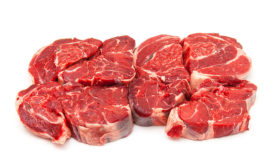Meat and Poultry Processing
Protein by the Numbers
Trends Shaping Meat, Poultry and Seafood Processing
December 28, 2017
Processing Tech
Process controls: a measure of success
Meat and poultry processors should design systems that encourage workers to meet company operating standards.
Read More
Market Snapshot
U.S. animal slaughter & production market snapshot
Expectations rise, carry short-term growth
Read More
Processing Tech
Better vision systems create better meat and poultry inspection
The use of vision systems to inspect meat and poultry products has increased as capabilities have improved and costs have gone down.
Read More
Protein Problem Solver
Harim Group's new "vertical" poultry-processing lines
Taking poultry processing to new heights: Marel Poultry outfits Harim Korea's new five-story "vertical" processing plant.
November 21, 2017
Meat Science Review
Advanced heifer carcass maturity and beef palatability
November 15, 2017
Stay ahead of the curve. Unlock a dose of cutting-edge insights.
Receive our premium content directly to your inbox.
SIGN-UP TODAYCopyright ©2025. All Rights Reserved BNP Media.
Design, CMS, Hosting & Web Development :: ePublishing










